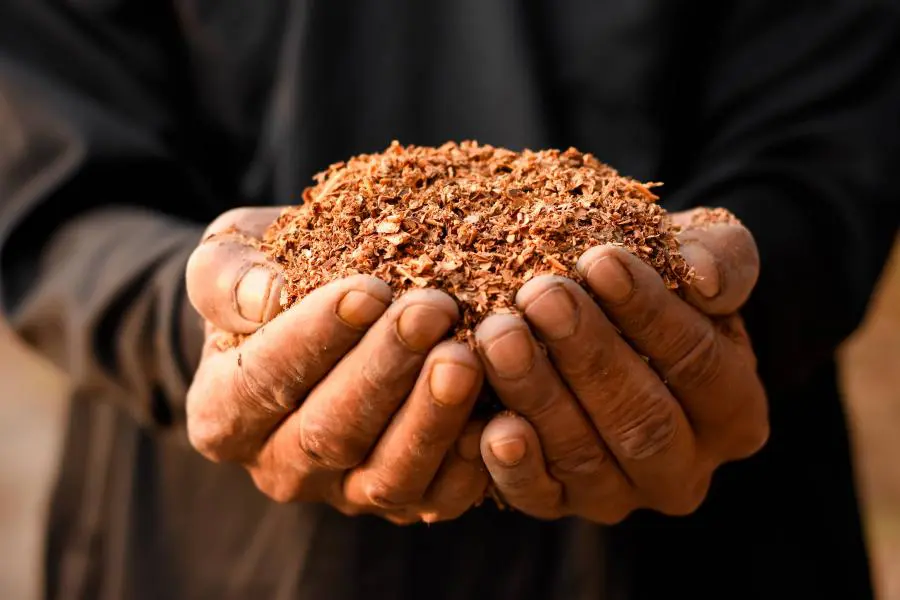Wood chips are an excellent addition to any compost pile. They’re a good source of carbon, and the coarse texture of the chips prevents the pile from compacting. This ensures air and water can flow freely.
But they’re known for taking a long time to breakdown.
If, like me, you don’t have years to wait for your compost, here are four ways to compost wood chips fast:
- add a nitrogen source
- make the wood chips as small as possible
- inoculate the pile
- heat the pile up
How to compost wood chips fast
Using these four tips you can have wood chip compost in as little as a few months.
Read on to find out how.
Add a nitrogen source
Wood is a high carbon, low nitrogen material and has a C:N ratio of about 400:1.
The microbes that break down the wood feeds on nitrogen. They’ll be able to work faster if you add extra nitrogen to the pile.
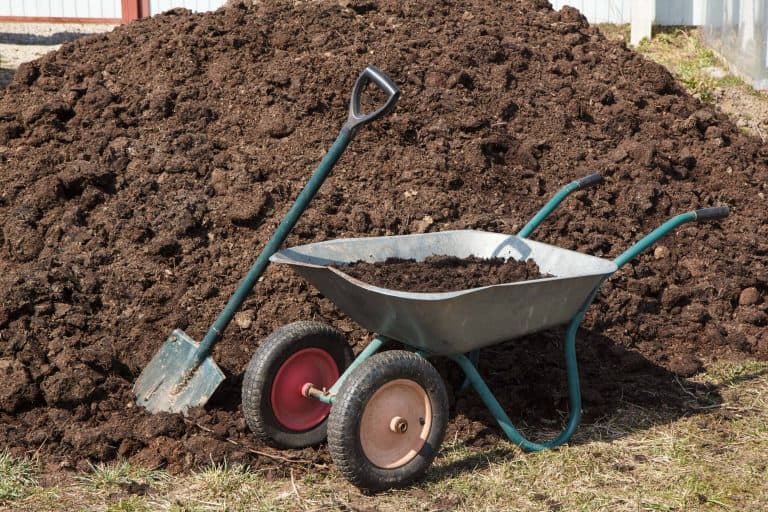
Good sources of nitrogen include manure, urea, coffee, grass clippings, ammonium sulfate, kitchen scraps, comfrey leaves, and even urine! Installing a composting toilet is a great way to get an endless supply of free urine.
Any green leaves that were on the branches when you shredded them will also contribute nitrogen to the pile.
Highly concentrated nitrogen sources like urea and ammonium sulphate are only really needed if you’re composting a large number of wood chips. If you’re just composting a few in your home compost pile, then less concentrated sources like manure are fine.
Rock dust is another additive that we’ve seen lots of people recommend. It’s full of nutrients to feed your microbes. And more food means faster composting. You definitely can’t do any harm by adding it.
Make the chips as small as possible
The smaller the wood chips the faster they’ll decompose.
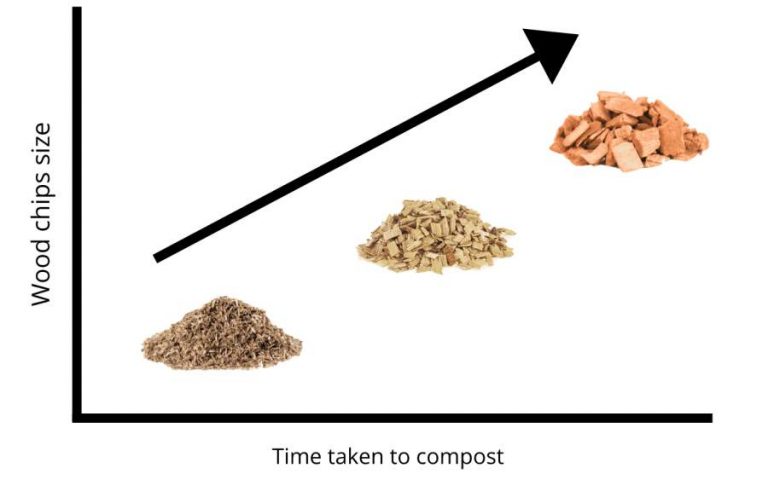
If you have branches at home you need to process, then we suggest investing in a powerful home wood chipper to make sure the chips come out as fine as possible. Sharpening the chipper blades will help keep your machine running efficiently.
If you’ve inherited bulky wood chips, you can always run them through the chipper shredder for a second time. Just be wary of any stray debris as rocks.
Inoculate the compost pile
Bacteria and fungi are the microbes responsible for breaking down organic matter into compost. Of the two, bacteria work faster. Fungal networks are slower to develop, so materials that favour fungi are typically slower to break down.
Wood is high in a protein called lignin that’s resistant to bacteria. Therefore, fungi does most of the work at the beginning, breaking down the lignin into components accessible to bacteria. If you see any mold in your compost it’s a sign the microbes are doing their job.
To speed up the development of fungal networks in your compost pile, you can inoculate it with fungi rich substances.
One way to do this is to make fungal rich compost tea – check out our ultimate compost tea recipe for how to do this.
Mushroom spawn is also a useful inoculant.
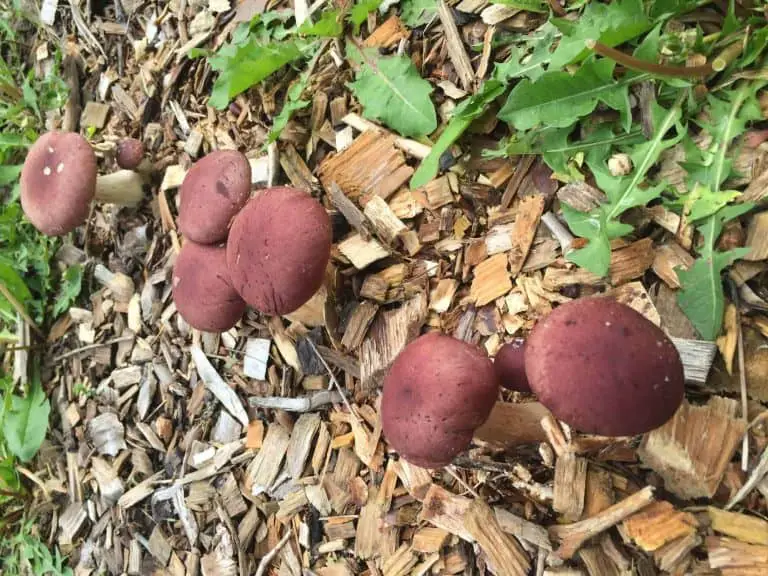
Wine cap mushroom mycelium are known to be one of the best activators for wood chips, but any mushroom spawn local to your area will do nicely. The only thing to avoid are honey mushrooms.
If you’re adding the inoculate to an already established compost pile, then add it before rain for the best effect. The rain water will make sure the mixture gets well spread out amongst the chips.
Heat up the compost pile
If you want to know how to compost wood chips fast, then get familiar with hot composting. Hot composting is the fastest method of composting. The Berkley hot composting method can make compost in only 18 days!
While it won’t be this quick with wood chips, heating up the compost heap will speed up decomposition.
We have a whole separate article on how to heat up compost, but the basic principles are:
- keep the pile moist
- aerate the pile
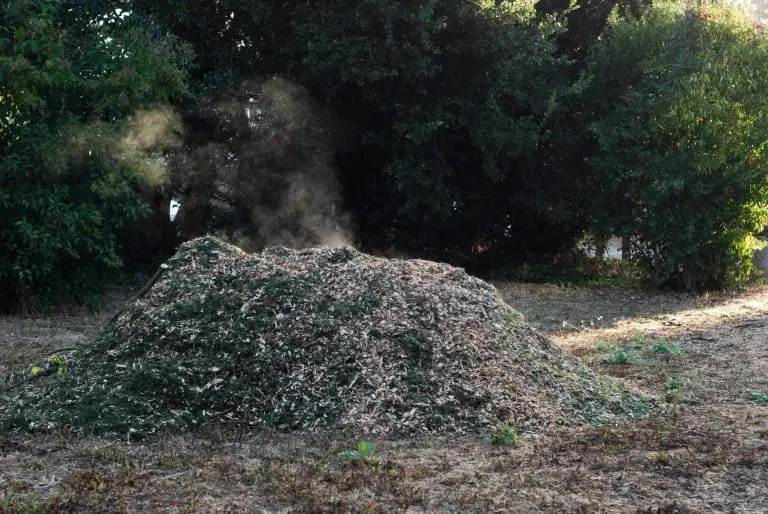
After carbon and nitrogen, oxygen and water are the next two most important ingredients in compost.
Water the pile as you build it, and then again whenever you feel it’s becoming too dry. Try not to soak it, but it should be visibly wet. If you live somewhere particularly sunny consider covering the pile with tarp to prevent it from drying out.
A wood chip pile is likely to stay well aerated without much intervention. Wood chips give the compost pile a porous texture so air can easily circulate. However, if your gut’s telling you the heap needs more oxygen you can turn it, just be aware that this might disturb the delicate fungal networks developing in your pile. Only turn the pile if you think it’s absolutely necessary.
As well as aerating the pile, turning also helps move material from the outside of the pile to the middle. The middle of the pile is the hottest part, so is where the fastest decomposition will occur.
How long does it take wood chips to decompose?
How long wood chips take to decompose depends on a number of factors. These include the type of wood, the chip size, and the climate in which the chips are left to decay.
If left alone to break down naturally, it could take 2-4 years. However, if you follow some of the steps we’ve outlined, you can turn wood chips into compost within a few months.
What to do with wood chip compost
You might read elsewhere that wood chip compost will make your soil more acidic and is best used on acid-loving plants like blueberries. While there’s an element of truth to this, we never worry too much about where to use our compost. The level of acidification will never be too extreme. Some research has actually shown the opposite to be true.
Compost made from wood will be fungal dominated. All plants like fungi, however, certain plants really like it.
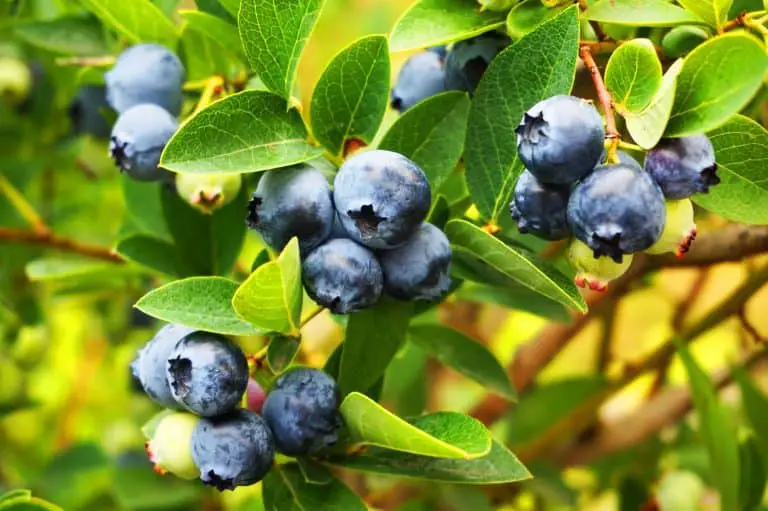
Berry bushes, vines, shrubs, fruit trees, and other deciduous trees all have a preference for fungal dominated soils. So if you have any of these growing in your garden, they’d be an excellent place to start adding your compost.
We always screen our wood chip compost before using it. After screening, you might notice a few unprocessed bits of wood chip left behind. These make great inoculates for your next batch of compost because they’re already teaming with beneficial microbes. So don’t throw them away!
What wood chips can I use?
Most wood chips are fine for composting. Hardwoods like oak or hickory will be a little more stubborn than softwoods like pine or yew. But everything will break down eventually.
However, there are a few things to be aware of when composting certain wood chip types.
Cedar
Cedar wood contains resins that means it’s naturally rot-resistant, so will be very slow to break down. Not ideal if you’re looking for fast compost.
Black Walnut
Black walnut trees contain a substance called Juglone which is toxic to some plants. Composting the chips should remove this toxicity, but it’s still best to err on the side of caution.
Eucalyptus
Eucalyptus trees are known to be allelopathic and inhibit the growth of other plants. Again, the composting process should break down all the potentially harmful chemicals, but it’s good to be aware of the risk.
Treated wood
Treated wood is full of chemicals that you don’t want to be putting into your soil. We wouldn’t recommend composting a massive load of treated wood, but if you decide to, it’s a good idea to take some extra precautions to remove these chemicals.
Watering the pile more than usual will help leech out any harmful chemicals and dilute them to levels that won’t impact the earth surrounding your compost pile.
Wood chips as mulch
An alternative to composting wood chips in a traditional pile is to use them as mulch.
The chips will still break down and benefit your soil; it’s just the method is slightly different. We like to use thicker layers of around 6 inches because we find the layers tend to compact quite quickly.
Wood chip mulch won’t break down as fast as composting, but if you have a lot of spare chips, it’s an efficient way to use them up.
Before we go any further I want to address a question many of you might be asking
Do wood chips steal nitrogen from the soil?
There’s a common misconception that you shouldn’t use wood chips as mulch because they’ll steal nitrogen from the soil and leave none for your plants. This is not entirely true.
It’s true that wood chips need nitrogen to break down, and if they can’t find an alternative source, they’ll draw it from the soil. However, they’ll only use nitrogen from the very top layers of soil. Most plants take their nitrogen from much deeper so won’t be affected.
Plants that could be mildly affected include shallow-rooted vegetables, annuals and first-year perennials.

But even then, it’s only a temporary issue. Once the microbes have done their job and broken the wood down, the nitrogen is released back into the soil, along with lots of other nutrients.
If you want to be extra careful, you can always put a layer of compost down first and then put the wood chips on top. This mimics the forest environment.
Once the wood chips have turned into soil, they can become the cushioning layer for your next lot of organic material.
Benefits of using wood chips as mulch
Wood chips make great compost, but they also make great mulch.
The nitrogen depletion effect we spoke about above is why wood chip mulch is so effective at suppressing weeds. Because the top layers of your soil will be deficient in nitrogen, weeds can’t germinate. And fewer weeds means more nutrients available for your plants.
Other benefits of using wood chips include water retention and temperature moderation.
More helpful resources
If you want to know more about using wood chips in your yard we recommend you watch Back to Eden. It’s free to watch on Amazon if you have a Prime account (or sign up for a free 30-day trial!).
It follows Paul Gautschi as he builds a sustainable garden using organic materials. And he’s a big advocate for wood chips.
